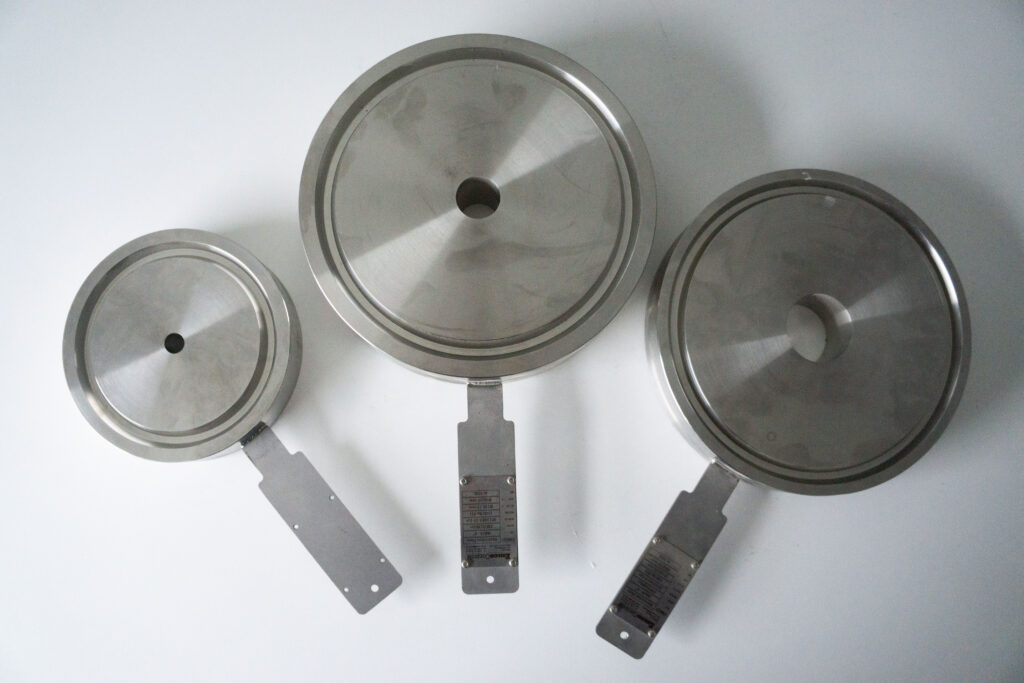
There are many important factors to look at when selecting and sizing restriction plates. Although there are highly advanced control valves available in the market, there is a remarkable usage of restriction plates in the piping industry. A restriction plate is mainly used to control the flow of the fluid or to achieve pressure restriction. Based on the requirements, the restriction plate should be sized for critical or pre-critical conditions.
In general, pressure control restriction plates are sized by considering the maximum pressure drop lesser than the critical pressure. Moreover, the flow-controlling restriction plates are sized for critical pressure drops. The thickness of the plate is calculated as per the R.W. Miller handbook and sizing is conducted as per ISO 5167-2.
The restriction plate should be selected based on the flow rate and required pressure drop. The following are the types of restriction plates:
Restriction plates, as well as orifice plates, are both used to create a pressure drop. Both of these are based on Bernoulli’s principle, which states that when the pressure drops across the restriction plate, it is directly proportional to the volumetric flow rate that passes through the orifice plate. Furthermore, restriction plates and orifice plates are similar in structure.
So what is the difference between a restriction plate and an orifice plate? A restriction plate works on the same principle as an orifice plate, but it provides a different purpose. The main difference is their usage. A restriction plate is used for overcoming pressure in a pipe by raising fluid velocity, while an orifice plate is used for measuring flow rate. The restriction plate is also thicker. When the fluid passes through the thick plate, energy is lost in heat and friction, resulting in significant pressure drop.
| Cookie | Duration | Description |
|---|---|---|
| cookielawinfo-checkbox-advertisement | 1 year | Set by the GDPR Cookie Consent plugin, this cookie is used to record the user consent for the cookies in the "Advertisement" category . |
| cookielawinfo-checkbox-analytics | 11 months | This cookie is set by GDPR Cookie Consent plugin. The cookie is used to store the user consent for the cookies in the category "Analytics". |
| cookielawinfo-checkbox-functional | 11 months | The cookie is set by GDPR cookie consent to record the user consent for the cookies in the category "Functional". |
| cookielawinfo-checkbox-necessary | 11 months | This cookie is set by GDPR Cookie Consent plugin. The cookies is used to store the user consent for the cookies in the category "Necessary". |
| cookielawinfo-checkbox-others | 11 months | This cookie is set by GDPR Cookie Consent plugin. The cookie is used to store the user consent for the cookies in the category "Other. |
| cookielawinfo-checkbox-performance | 11 months | This cookie is set by GDPR Cookie Consent plugin. The cookie is used to store the user consent for the cookies in the category "Performance". |
| elementor | never | This cookie is used by the website's WordPress theme. It allows the website owner to implement or change the website's content in real-time. |
| viewed_cookie_policy | 11 months | The cookie is set by the GDPR Cookie Consent plugin and is used to store whether or not user has consented to the use of cookies. It does not store any personal data. |
| Cookie | Duration | Description |
|---|---|---|
| _ga | 2 years | The _ga cookie, installed by Google Analytics, calculates visitor, session and campaign data and also keeps track of site usage for the site's analytics report. The cookie stores information anonymously and assigns a randomly generated number to recognize unique visitors. |
| _ga_* | 1 year 1 month 4 days | Google Analytics sets this cookie to store and count page views. |
| _gat_UA-* | 1 minute | Google Analytics sets this cookie for user behaviour tracking. |
| _gat_UA-151202324-1 | 1 minute | A variation of the _gat cookie set by Google Analytics and Google Tag Manager to allow website owners to track visitor behaviour and measure site performance. The pattern element in the name contains the unique identity number of the account or website it relates to. |
| _gid | 1 day | Installed by Google Analytics, _gid cookie stores information on how visitors use a website, while also creating an analytics report of the website's performance. Some of the data that are collected include the number of visitors, their source, and the pages they visit anonymously. |
| CONSENT | 2 years | YouTube sets this cookie via embedded YouTube videos and registers anonymous statistical data. |
| VISITOR_INFO1_LIVE | 5 months 27 days | YouTube sets this cookie to measure bandwidth, determining whether the user gets the new or old player interface. |
| YSC | session | Youtube sets this cookie to track the views of embedded videos on Youtube pages. |
| yt-remote-connected-devices | never | YouTube sets this cookie to store the user's video preferences using embedded YouTube videos. |
| yt-remote-device-id | never | YouTube sets this cookie to store the user's video preferences using embedded YouTube videos. |
| yt.innertube::nextId | never | YouTube sets this cookie to register a unique ID to store data on what videos from YouTube the user has seen. |
| yt.innertube::requests | never | YouTube sets this cookie to register a unique ID to store data on what videos from YouTube the user has seen. |